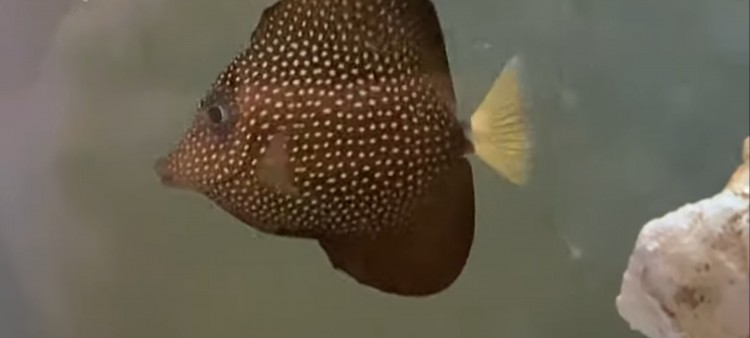Gem Tang: Complete Care Guide
- Sep 13, 2021
- Anshika Mishra
- 868 0 0

Gem Tang is probably one of the most expansive fish in the saltwater hobby. Though they are amazing fish, the price of this fish makes it one of a kind and very rare to find.
Prices: If you are lucky, you can get one for about $800, but they can go all the way up to $1500. With the difficulty of catching them, the prices are just going to go up continually. They are a very deep water swimmer, which makes their catching difficult, and it also raises the chances of them presiding during shipment.
They can only be caught at one place in the world that is off the coast of Madagascar. So, when you put all of these factors together, getting one into your tank costs a lot of money.
Tank Size: You will need about a 180-gallon tank. It will give them plenty of swimming room to go around and just give them plenty of room to grow.
Care Level: They are moderate. It is not a hard fish to take care of, and you are just spending that money to get one.
Temperament: They are semi-agressive. They are a Tang, so that they will become the king or the queen of the tank; they are normally very territorial towards new fishes that come in. They tend to take the whole place over and call it their own.
They have the aggression equivalent to a Yellow Tang, so they will not be going after the fish constantly, but you can definitely tell whenever someone gets in their area or is too close to them that they don't mind swinging on them.
Reef Safe: They are a great reef fish to have; they go around graze around the rock, looking for any algae, leftover food. They never mess with your corals, and they go with pretty much all kinds of fish and crustaceans too.
Water Parameter
- dKH: 8-12
- pH: 8.1-8.4
- Temperature: 72-78
- Salinity: 1.020-1.025
Maximum Size: They can eventually get up to about 10-inches. It does take a few for them to get up to this length.
Color: They have a solid black body with white polka dots all over. They have nice yellowtail adn look very pretty. As a juvenile, they will be of gray color, but as they get older, their body starts to darken until you have that solid black.
Diet
They are omnivores, so that they will be eating meaty food and algae food. In the wild, they clean up algae all day and night long. So, make sure that you are feeding them food like frozen shrimp along with plenty of algae. Also, you need to be putting clips of algae in the tank daily because they can eat it non-stop.
Make sure you are feeding them properly because they can get aggressive when hungry. Also, try if you can get natural algae into the tank, so this fish can go around and nibble on it. You can also put squirt bottles in their food to keep them healthy.
Compatibility
They can be with other Tangs, but they have to be of different body shapes; otherwise, they will see themselves as the same species and get aggressive. You can mix multiple Tangs, all with a different body shape. If you want to keep two of them together, try to add both at the same time. They can pop out of the bag with their little needle, so be extra careful while transporting them. To keep them happy in the tank, you want to have plenty of live rocks in the tank.
After all the money and care it takes to get it in your tank, you will end up with a very active and hardy Tang. They do very well in the tank environment; most of them do life past the 10-year mark.






About author